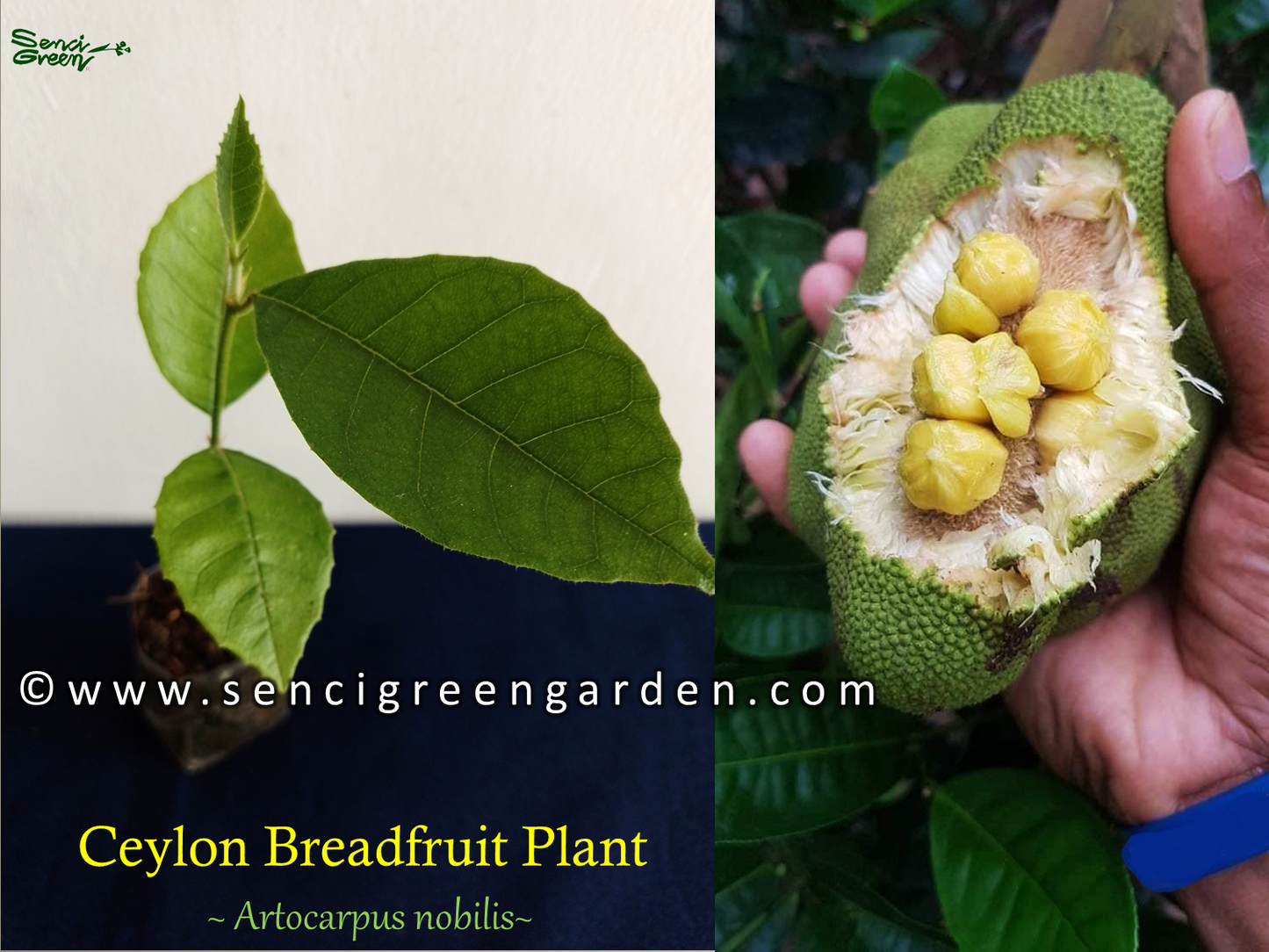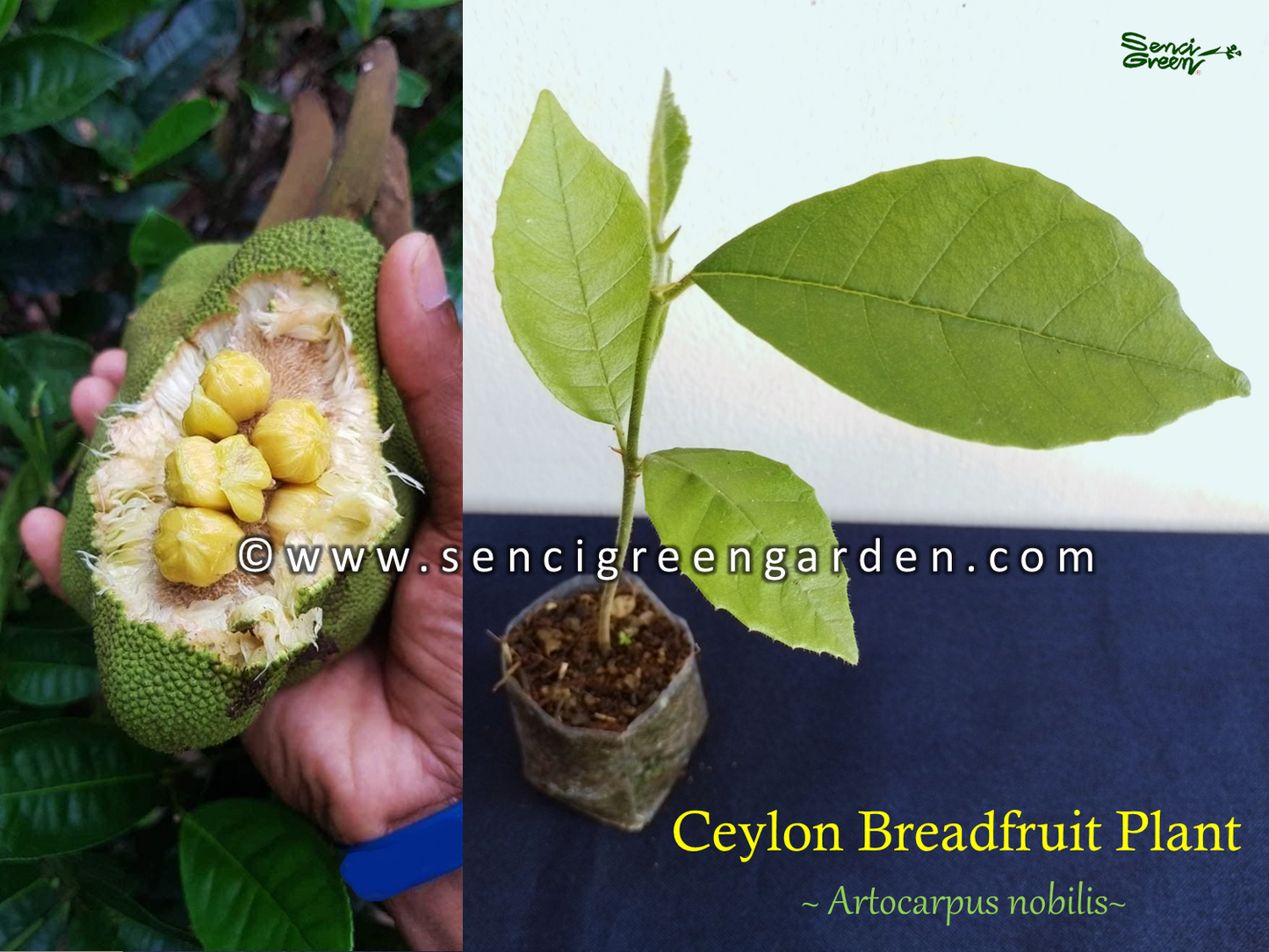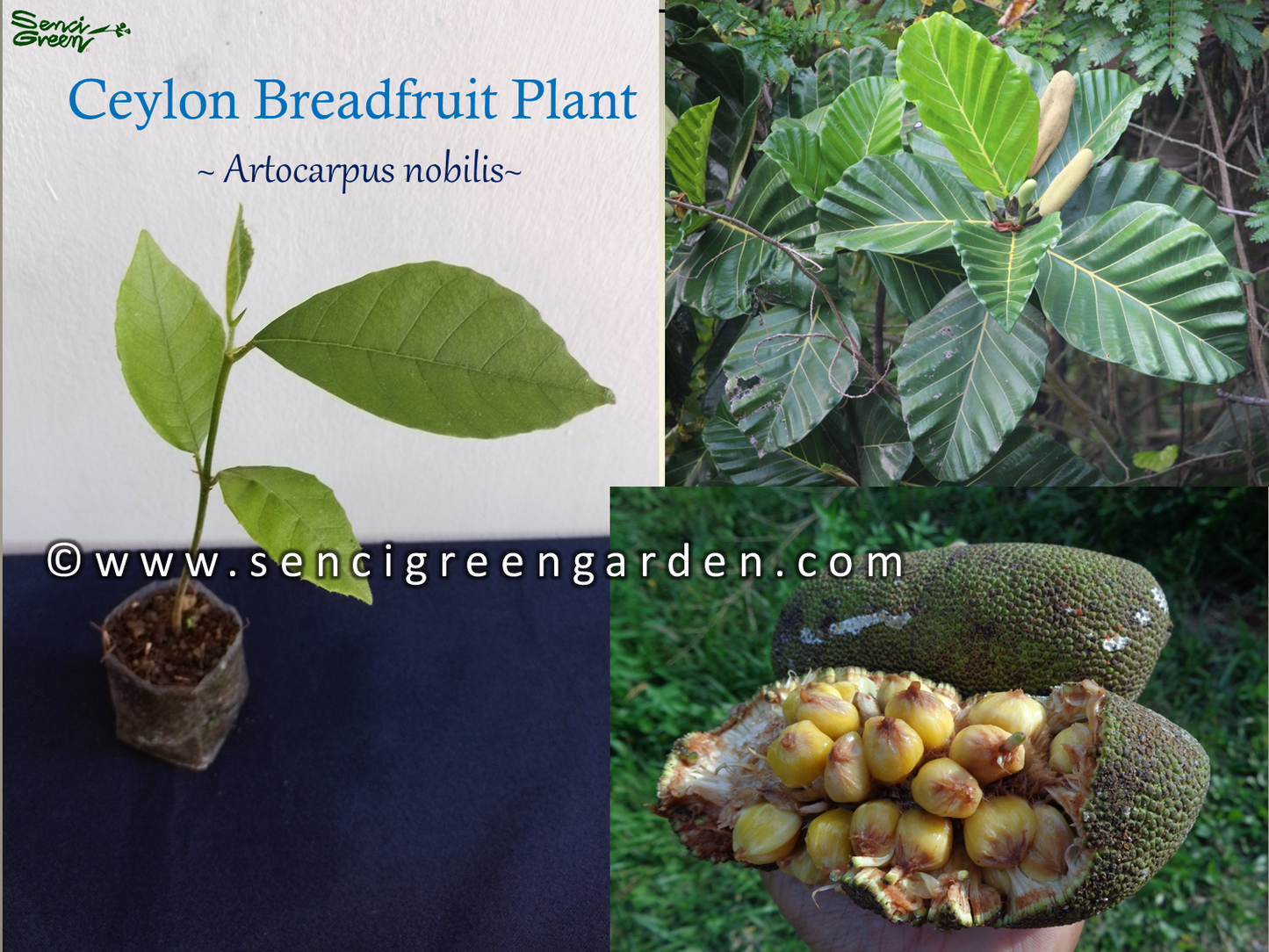Senci Green Garden
Ceylon Breadfruit plant (Artocarpus nobilis) x1 plant
Ceylon Breadfruit plant (Artocarpus nobilis) x1 plant
Couldn't load pickup availability
Ceylon Breadfruit plant (Artocarpus nobilis)
Plant Size : 6"- 8" Inches
Artocarpus nobilis, commonly known as the breadfruit, is a tropical tree belonging to the Moraceae family, which also includes figs and mulberries. Native to the Malay Peninsula and western Pacific islands, this tree is widely cultivated in tropical regions around the world for its starchy, nutritious fruit.
Physical Description
Tree: Artocarpus nobilis typically grows up to 20 meters (65 feet) tall, with a dense crown of large, glossy, deeply lobed leaves.
Fruit: The breadfruit itself is round to oval-shaped, about 10 to 15 centimeters (4 to 6 inches) in diameter, and covered in a pattern of hexagonal or polygonal segments. When ripe, the skin turns yellow-green to yellow-brown and emits a sweet aroma.
Seeds: The fruit contains numerous seeds embedded in a starchy pulp that can be cooked and eaten.
Cultural and Culinary Significance
Food Source: Breadfruit is a staple food in many tropical regions, valued for its high carbohydrate content and versatility in cooking. It can be boiled, baked, fried, or roasted, with a taste described as similar to potatoes or freshly baked bread.
Nutritional Value: It is rich in complex carbohydrates, fiber, vitamins (especially vitamin C), and minerals, making it an important dietary component in many tropical diets.
Historical Importance: Breadfruit played a significant role in the history of Pacific island cultures, where it was traditionally cultivated and transported by ancient seafarers. It remains culturally important in many Pacific and Caribbean islands today.
Cultivation
Climate: Breadfruit thrives in tropical and subtropical climates with abundant rainfall and temperatures between 25 to 35°C (77 to 95°F).
Propagation: It is propagated through seeds, cuttings, or grafting onto suitable rootstocks.
Harvesting: The fruits are harvested when mature, usually by cutting them from the tree, and can be stored for several weeks under proper conditions.
Ecological Impact
Breadfruit trees are valued not only for their fruits but also for their role in agroforestry systems, providing shade, soil stability, and biodiversity in tropical ecosystems.
In summary, Artocarpus nobilis, or breadfruit, is not only a source of food and nutrition but also a culturally significant and ecologically beneficial tree in tropical regions worldwide. Its rich history and adaptability make it a valuable component of tropical agriculture and cuisine.
Share






